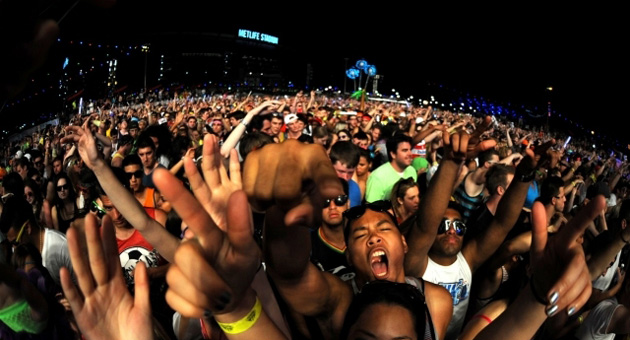 Sometimes, reluctance fabricates a relationship – one not of mutual appreciation but rather of tolerance and muted, strained acknowledgement. Over the past two years, the rest of the U.S. top 40 genres have embraced electronic dance music in such a fashion. Instead of the synthesizer and repetition oddity it was perceived as for the last decade, the genre transformed into the backbone of pop songs and hip-hop tracks, and even on occasion, its producers held their own alongside established chart-toppers.
Sometimes, reluctance fabricates a relationship – one not of mutual appreciation but rather of tolerance and muted, strained acknowledgement. Over the past two years, the rest of the U.S. top 40 genres have embraced electronic dance music in such a fashion. Instead of the synthesizer and repetition oddity it was perceived as for the last decade, the genre transformed into the backbone of pop songs and hip-hop tracks, and even on occasion, its producers held their own alongside established chart-toppers.
Yet, beneath the façade of outstretched arms is suspicion and a begrudging attitude toward coexistence: EDM is still the black sheep, but one that’s included today and estranged tomorrow. As much as pop and hip-hop producers are bringing on the Balearic beat, the genre has had to contort itself to fit a set of narrow standards. In short, EDM has been given a Hollywood makeover, of sorts, with brown roots frosted over, hairs plucked out, and form shaped to perfect starlet proportions.
The so-called “improved” image, in turn, paints an artificial picture of the genre, with its classic traits obscured or removed.
Timing
Can a seven-minute track last on the radio? Not a single- or radio-friendly version, mind you, but the full seven minutes of ups and downs and repetition? Pop radio play forcibly reduces producers’ efforts down to a four-minute or shorter sound bite.
Formula
Aside from trimming a track in half, an EDM producer, to gain mainstream respect, must compromise himself further. Since the genre took off, “compromise” is spelled “collaboration.” And, no, it’s not with the trusted dance diva singer. Instead, it’s the pop star, the one whose producers dabbled in hip-hop back in 2005; in 2012, he or she – call it “Usher,” “Rihanna,” or “Nicki Minaj” – wants to make a dance track. And your label, without hesitation, signs up the DJ because, with his production skills and the singer’s popularity, the track’s going to blow up the charts.
Rigid expectations don’t end at radio play, however. The emergence of EDM has caused music festivals to blossom all over like, well, a bunch of Electric Daisy Carnivals. With each lineup increasingly appearing similar to the last and companies like Live Nation taking over EDM promoters, music festivals are scrubbed clean and setlists boiled down to hits. This predictability, while sacrificing creativity, brings in the bucks.
Denial
These days, when a big-name DJ plays at a club, the event is considered an intimate gig. Before, this would have been a de rigueur performance. Although DJs still inhabit clubs, with their darker atmosphere and lesser dependence on visuals, it’s the lower-rung performers taking on such gigs, and at this point in the genre’s history is just a stepping stone to bigger and better things.
Lack of Independence
Ultimately, though, the rest of the music industry guilt trips EDM, essentially telling its producers, “You wouldn’t be anywhere if it weren’t for me!” In a sense, though, the sentiment is true; without David Guetta collaborating with the Black Eyed Peas and Lady Gaga adopting a dance music beat, the genre wouldn’t have attained so much prominence over the last three years. But with guilt trips, rigid expectations, and a transformation from originality to predictability, has it been worth it?



